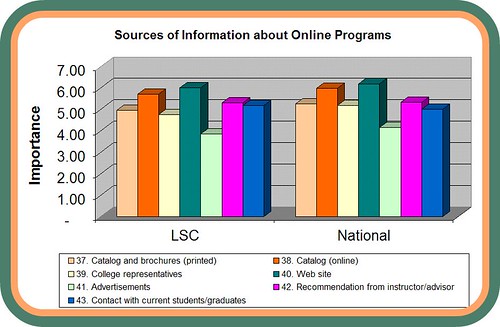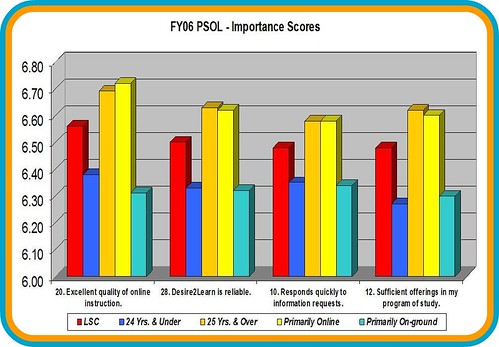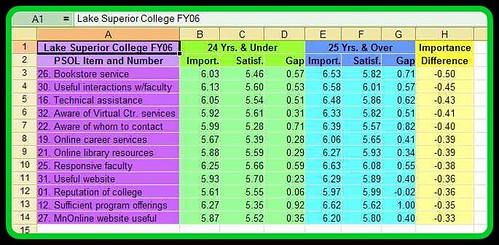Questions 37-43 on the PSOL simply gather information about how important the different sources of information are to students when they are looking for information about online programs. Not surprisingly, campus web sites and online catalogs rank highly in importance, while printed catalogs and college representatives (recruiters, etc.) rank much lower.
By far the lowest importance rankings are reserved for advertisements. I actually question the validity of the low scores on advertisements. I agree that they are not deserving of high rankings, but I think that part of the reason of the very low rankings is that most people (especially students) don’t want to admit that they might have been influenced by an advertisement or promotion.
I think this is interesting since most people in higher ed that I know claim that the main reason that there are over 200,000 students in University of Phoenix is because they are a slick marketing machine. So either students underestimate the importance of marketing/advertisement or everyone needs to come up with another reason why so many students enroll at U of Phx.




